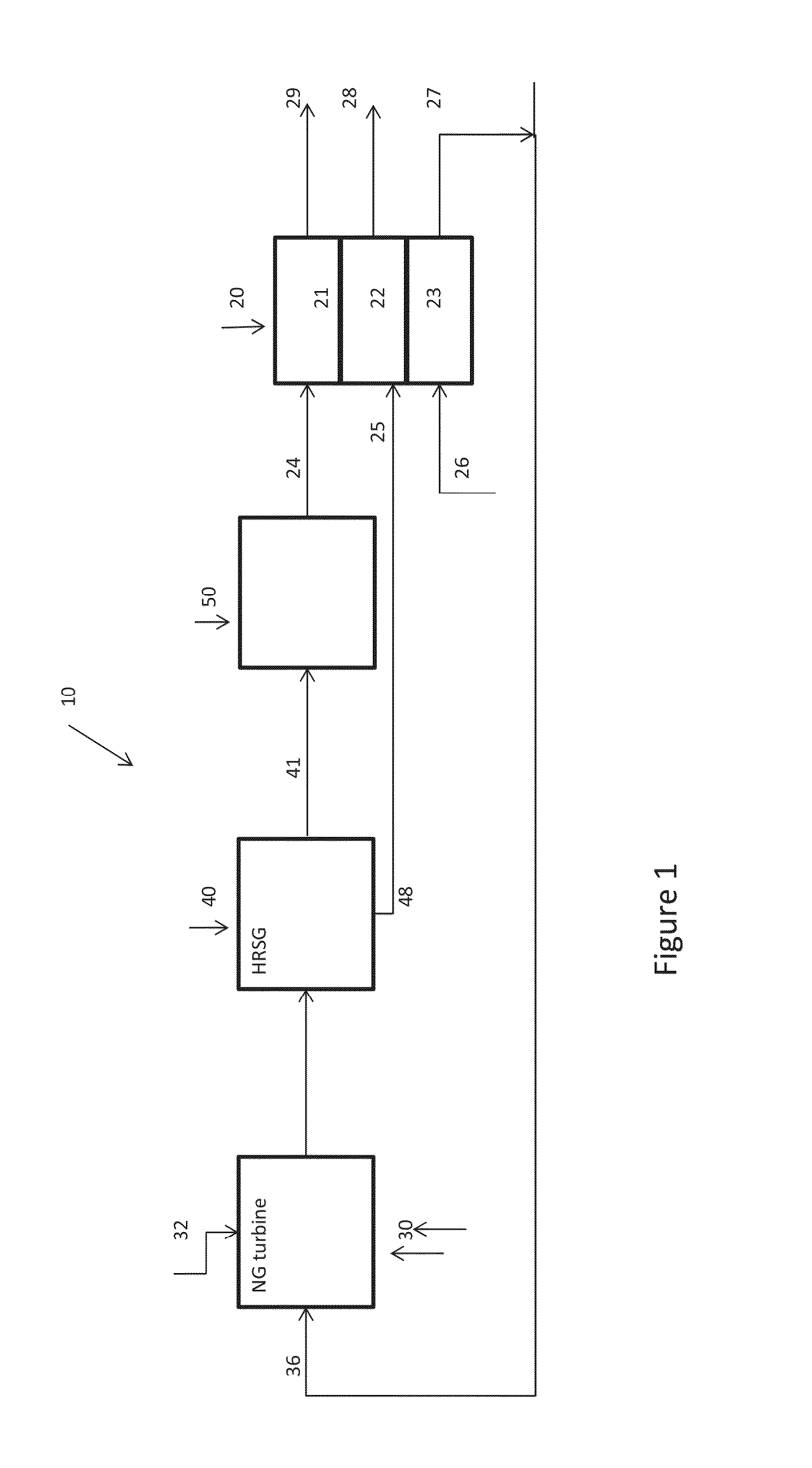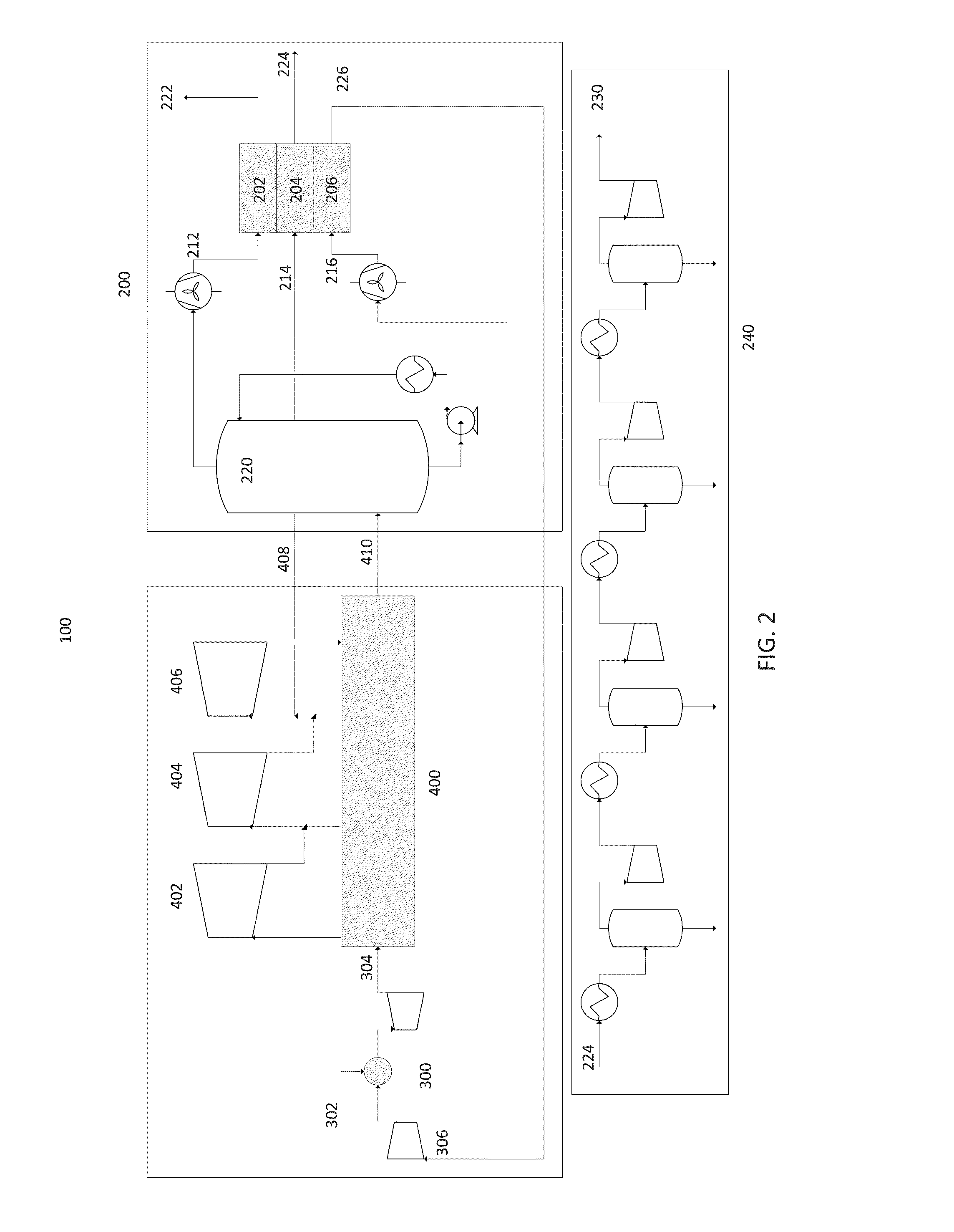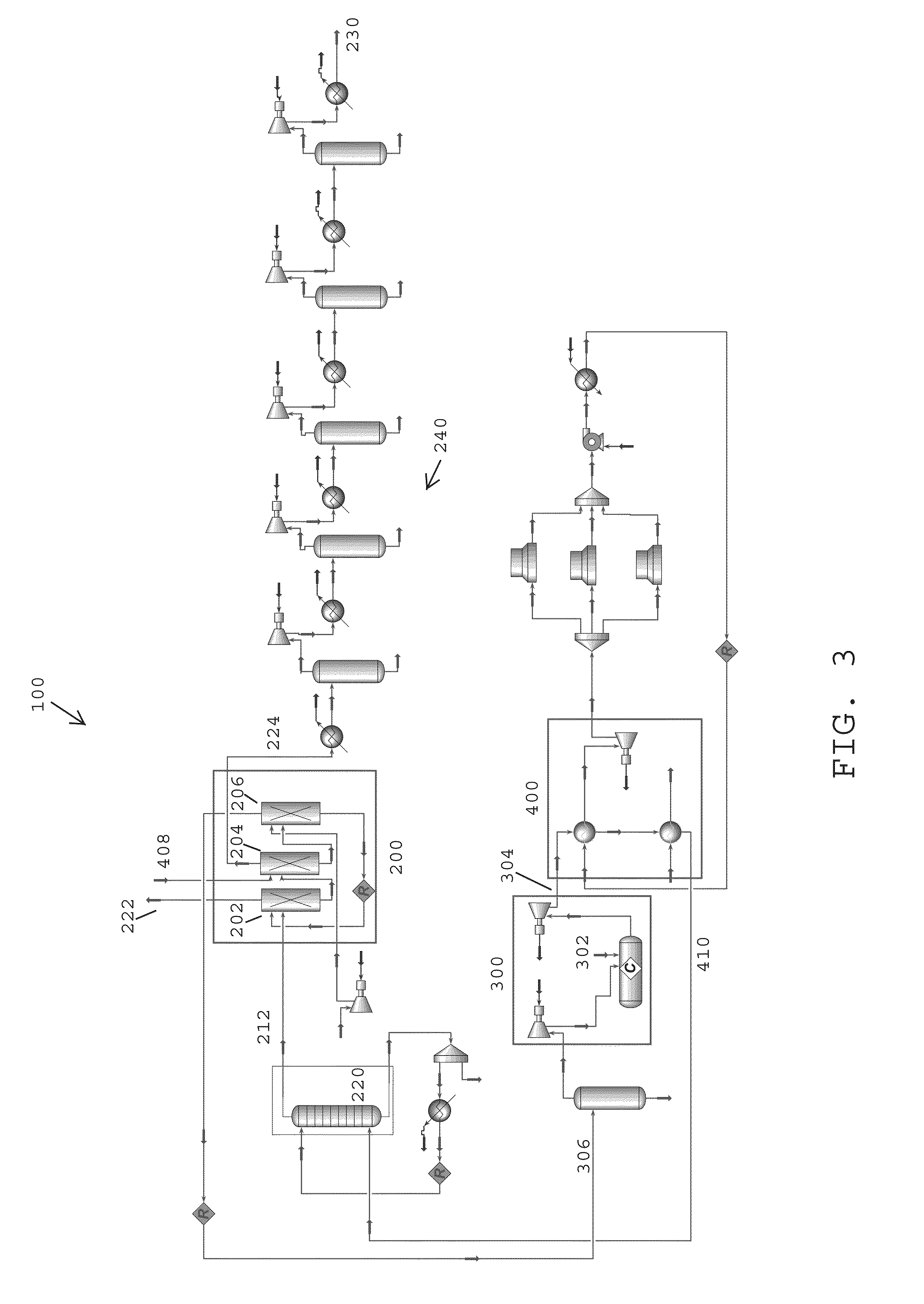System and method for integrated adsorptive gas separation of combustion gases
a technology of combustion gas and integrated adsorptive gas, which is applied in the separation process, emission prevention, lighting and heating apparatus, etc., can solve the problems of increasing temperature, increasing temperature, and inefficiency of typical conventional temperature adsorption process in fossil fuel combustion applications
- Summary
- Abstract
- Description
- Claims
- Application Information
AI Technical Summary
Benefits of technology
Problems solved by technology
Method used
Image
Examples
Embodiment Construction
[0047]In one embodiment of the present invention, an integrated adsorptive gas separation process is provided for separating at least a portion of a combustion gas mixture from a fuel combustor, wherein the combustion gas mixture comprises at least carbon dioxide and nitrogen components. In one such embodiment, the adsorptive gas separation process may comprise a thermal swing adsorption (hereinafter “TSA”) process, wherein at least one desorption step for desorption of a combustion gas component adsorbed on an adsorbent material is driven primarily by thermal heating of the adsorbent material, although secondary desorptive mechanisms such as purge or displacement purge with a purge fluid may also be used in desorption of adsorbed components. In another such embodiment, the adsorptive gas separation process may comprise a pressure swing adsorption (hereinafter “PSA”) process, wherein at least one desorption step for desorption of a combustion gas component adsorbed on an adsorbent m...
PUM
| Property | Measurement | Unit |
|---|---|---|
| separation | aaaaa | aaaaa |
| separation | aaaaa | aaaaa |
| separation | aaaaa | aaaaa |
Abstract
Description
Claims
Application Information
 Login to View More
Login to View More - R&D
- Intellectual Property
- Life Sciences
- Materials
- Tech Scout
- Unparalleled Data Quality
- Higher Quality Content
- 60% Fewer Hallucinations
Browse by: Latest US Patents, China's latest patents, Technical Efficacy Thesaurus, Application Domain, Technology Topic, Popular Technical Reports.
© 2025 PatSnap. All rights reserved.Legal|Privacy policy|Modern Slavery Act Transparency Statement|Sitemap|About US| Contact US: help@patsnap.com



